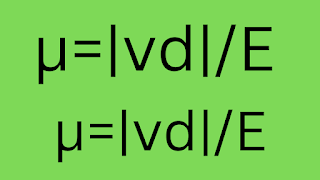Bingham Plastic : A Bingham body represents the case of an ideal plastic material which supports a finite stress before a strain is initiated. Thus, after the material reaches a definite Stress level known as the yield stress, sigma 0, a finite strain rate is generated, the Stress-strain rate relationship is assumed to be linear, as in Newtonian fluids, but only after attainment of the yield stress (sigma 0 ) . Shear stress equation for bingham plastic is given by: Examples: clay suspensions, drilling mud. toothpaste, mayonnaise, chocolate and mustard. Pseudoplastic: The behavior of most real plastics is, however, characterized by non- linear relationships which are concave downward as shown by the pseudoplastic behavior. Most plastic melts, solutions or dispersions exhibit pseudoplastic flow patterns. At rest, long chain molecules of a plastic melt, solution or dispersion are believed to engage each other into stable associations as a c...
.png)
.png)
.png)

.png)
.png)
.png)
.png)
.png)
.png)
.png)
.png)

